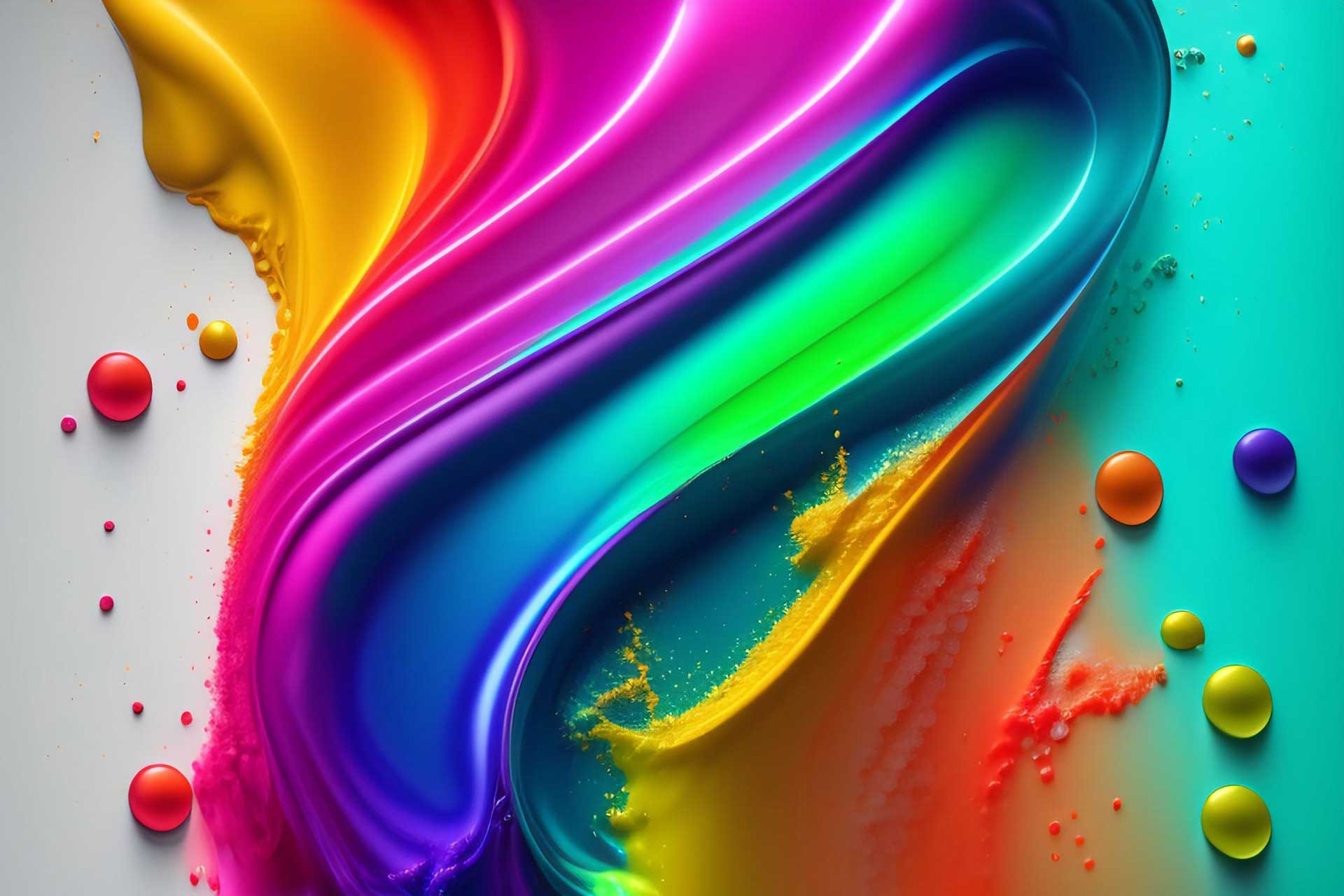In the world of branding and design, color is a powerful tool that helps define your identity and influence the way people perceive your brand. Choosing the right color palette is like selecting a few perfect grains of sand from a vast beach—seemingly simple, but with endless options (and lots of opportunities to overthink your decision). Below, we’ll explore the significance of color in branding, dive into color psychology, and learn how to create cohesive color palettes that uphold your brand’s image and essence.
understanding color psychology
Color is more than just a visual element. It makes a statement. It can evoke emotions, and shape perceptions. Different colors convey distinct feelings and associations. Big-name companies like Coca-Cola, Tide, and Apple have harnessed the power of color to build lasting brand identities. Color choices aren’t arbitrary; they carry profound meaning and can have a significant impact on how your audience interacts with your brand.

red
Excitement | Strength | Love

green
Nature | Healing | Freshness

purple
Royalty | Luxury | Spirituality

white
Clean | Simplicity | Honesty

orange
Confidence | Bravery | Success

blue
Trust | Peace | Loyalty

brown
Dependable | Rugged | Simple

yellow
Creativity | Happiness | Warmth

pink
Compassion | Sincerity | Sweet

black
Dramatic | Sophistication | Security
Of course, these color associations aren’t definitive or exhaustive, but they act as a strong starting point for selecting the colors that your brand will be built on.
exploring the color wheel and harmonies
The color wheel is our guide to understanding how colors work together. Colors that are opposite each other are called “complimentary” because they help each other stand out. Complimentary color palettes are more dynamic and “punchy.”
Colors that are next to each other are called “analogous” and blend nicely with each other. Analogous color schemes feel pleasant and well-balanced.
When a palette is based on the various tints, tones, and shades of one color, it’s called “monochromatic.” Monochromatic color palettes are visually pleasing, yet very powerful.
Choosing the type of harmony you’d like to use in your branding provides structure to your color choices. Our color palette falls somewhere between analogous and complimentary, with the analogous hot pink and maroon hues sitting almost completely opposite the color wheel from our primary neon yellow. This creates visual balance, with an unexpected twist!
3 ways to choose the right color palette for your brand
Choosing a color palette is an important step in building your brand. This process is one part art, another part heart, and another part science. There are endless approaches to choosing the colors that will represent your brand, but we’ve found these three options to be easy and effective:
define your environment
Colors provoke certain feelings and emotions. How do you want your brand to make your audience feel? Are you looking to create a relaxing atmosphere, or a high-energy environment? Which colors are associated with your brand’s core values? We recommend choosing two primary colors, and then 3–5 additional colors that can be used in corporate collateral, and throughout your digital presence.
This helpful color wheel tool can help you explore color palettes, and find an array of hues that will work in harmony to uphold your brand image and essence.
create a vision board
Assemble your favorite photos on a board, and draw similarities from the selection. Look for colors that are common factors across your photos. You may have unknowingly chosen these photos because a certain color resonates with you!
When we get hired for branding projects, we usually ask clients to send along photos that they feel represent the image and personality of the brand they’d like to build. They’re often surprised to see a clear color palette emerge from this process!
This tool can help your extract a color palette from your favorite photos.
start with your favorite color, and go from your gut!
While color shouldn’t be a totally arbitrary component of your branding, you might be surprised to find that your favorite color is associated with many of the characteristics you’d like to align with your business.
For us, choosing our primary color was easy—neon yellow is our founder’s favorite color! It also just so happens to be associated with creativity and happiness!
A brand’s color palette should include five to seven colors. There should be two primary colors for the logo, which are the most representative and recognizable colors of your brand. Ours are neon yellow and hot pink. Then, there should be a dark color which could be used for text on your website, and a light color that could be used as a background color. Lastly, introducing an accent color or two is a great way to break up the canvas, or add a “pop” of unexpected contrast to your color scheme.
Mastering the art of color in branding and design is about making informed choices that resonate with you and your audience. With the right color palette, you can make a lasting impression that enables brand recall, while effectively asserting your brand’s personality. Color is a key element that deserves attention during the branding process, and we’re here to help!
contact birdhouse marketing & design



